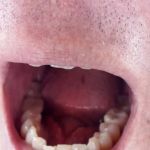How Dental Lasers Are Used in Modern Dentistry: Revolutionizing Oral Care
- Introduction to Dental Lasers
- Benefits of Dental Lasers in Dentistry
- Types of Dental Lasers Used in Modern Dentistry
- How Dental Lasers Are Used in Dental Procedures
- Real-Life Examples of Dental Lasers in Action
- The Future of Dental Lasers in Dentistry
1. Introduction to Dental Lasers
Dental lasers have emerged as a groundbreaking tool in modern dentistry, offering a less invasive, more precise method for performing a variety of dental procedures. By using focused light energy, lasers can target and treat specific tissues with incredible accuracy. Whether it's for hard tissue (like teeth) or soft tissue (like gums), dental lasers have revolutionized how procedures are done, leading to less discomfort, faster healing, and better results for patients.
Unlike traditional dental tools, lasers can treat dental issues with minimal damage to surrounding tissue, offering a more comfortable experience for patients. Laser dentistry has gained widespread popularity over the years and continues to evolve as new technologies and applications emerge. But how exactly are dental lasers used, and what advantages do they offer to both dentists and patients?
2. Benefits of Dental Lasers in Dentistry
Dental lasers offer numerous benefits that make them a valuable tool in modern dental practices. Here are some of the key advantages:
2.1. Precision and Accuracy
One of the main benefits of dental lasers is their precision. The focused energy of the laser allows the dentist to treat only the affected tissue, minimizing damage to surrounding areas. This level of accuracy leads to improved results and faster recovery times for patients.
2.2. Reduced Discomfort
Laser treatments are often less painful than traditional methods. Because lasers are less invasive, they can reduce the need for stitches or even anesthesia in some cases. This results in less discomfort during and after the procedure, making it a preferred option for many patients.
2.3. Faster Healing and Recovery
Dental lasers promote faster healing due to their ability to seal blood vessels and nerve endings. This results in less swelling, less bleeding, and a quicker recovery process compared to traditional dental procedures.
2.4. Less Anxiety for Patients
Many patients experience dental anxiety, especially when it comes to more invasive procedures. Laser dentistry, with its minimally invasive nature and faster recovery times, can reduce anxiety and improve the overall patient experience.
3. Types of Dental Lasers Used in Modern Dentistry
There are several types of dental lasers, each designed for specific procedures. These lasers can be categorized into hard tissue and soft tissue lasers:
3.1. Hard Tissue Lasers
Hard tissue lasers are primarily used for procedures involving the teeth and bones. These lasers are ideal for cutting through tooth enamel and are often used for cavity treatment, tooth preparation, and even bone reshaping during dental implants.
3.2. Soft Tissue Lasers
Soft tissue lasers are used for procedures involving the gums and other soft tissues in the mouth. They are ideal for treating gum disease, reshaping gums, and removing lesions. Soft tissue lasers are also commonly used for frenectomies (removal of the frenulum) and can even be used for teeth whitening.
3.3. Diode Lasers
Diode lasers are a popular choice for soft tissue procedures. They are highly versatile and can be used for everything from gum contouring to treating cold sores and lesions. Diode lasers are also effective in reducing bacterial presence, making them ideal for procedures to treat gum infections.
3.4. CO2 Lasers
CO2 lasers are commonly used for soft tissue procedures and are especially effective for cutting and vaporizing tissue. They are often used for surgical procedures involving the gums and soft tissues inside the mouth.
4. How Dental Lasers Are Used in Dental Procedures
Dental lasers are used in a variety of procedures, from basic cleanings to complex surgeries. Here’s a breakdown of how lasers are utilized in different dental treatments:
4.1. Cavity Treatment
Dental lasers can be used to remove decay from teeth before filling cavities. The laser precisely targets the decayed area, leaving the healthy tooth structure intact. This method is more comfortable for patients and may reduce the need for anesthesia in some cases.
4.2. Gum Disease Treatment
Lasers are frequently used to treat gum disease. They can remove infected tissue and bacteria from the gums, promoting faster healing and reducing bleeding compared to traditional surgical methods.
4.3. Teeth Whitening
Lasers are sometimes used in conjunction with bleaching agents to enhance the whitening process. The laser activates the whitening gel, helping it penetrate deeper into the enamel for more dramatic results.
4.4. Soft Tissue Surgery
Soft tissue lasers are used for a range of procedures involving the gums and other soft tissues, such as reshaping gums for cosmetic purposes or removing lesions and tumors. Laser surgery minimizes bleeding and promotes quicker healing.
5. Real-Life Examples of Dental Lasers in Action
Real-life examples can show just how effective dental lasers are in modern dentistry. Take the case of Sarah, who recently visited a dentist to treat her gum disease. Using a diode laser, the dentist was able to remove the infected tissue and bacteria from her gums with minimal discomfort. Sarah reported significantly less swelling and bleeding compared to previous treatments she had undergone with traditional methods.
Similarly, Mike underwent a laser procedure for cavity removal. His dentist used a hard tissue laser to remove the decay and prepare the tooth for a filling. Mike was amazed at how comfortable the procedure was and appreciated that he didn’t need to receive an injection of anesthesia.
6. The Future of Dental Lasers in Dentistry
The use of dental lasers is continuously evolving, with new advancements making them more efficient and accessible. In the future, we can expect to see lasers becoming even more integral in dental practices, allowing for faster and more effective treatments with minimal patient discomfort.
As technology improves, lasers may become even more effective in diagnosing dental issues, such as detecting cavities or bacteria in hard-to-reach areas of the mouth. The potential for laser-assisted diagnostics and treatments will continue to push the boundaries of what’s possible in modern dentistry.
If you’re considering laser dentistry for your next dental visit, learn more about how dental lasers can benefit your oral health at Dentistry Toothtruth.







 Lakes Orthodontics4.0 (250 review)
Lakes Orthodontics4.0 (250 review) Steven J. Moravec, DDS, MS4.0 (189 review)
Steven J. Moravec, DDS, MS4.0 (189 review) Spencer Dental & Braces4.0 (459 review)
Spencer Dental & Braces4.0 (459 review) Dental Care at Dr. Phillips4.0 (205 review)
Dental Care at Dr. Phillips4.0 (205 review) Capital City Pediatric Dentistry3.0 (41 review)
Capital City Pediatric Dentistry3.0 (41 review) Pura Vida Orthodontics5.0 (24 review)
Pura Vida Orthodontics5.0 (24 review) The Importance of Oral Health Education During Pregnancy for a Healthy Pregnancy
The Importance of Oral Health Education During Pregnancy for a Healthy Pregnancy Best Tips for Brushing Your Teeth Properly for Healthy Gums: Essential Techniques for Oral Health
Best Tips for Brushing Your Teeth Properly for Healthy Gums: Essential Techniques for Oral Health Why Skipping Dental Checkups Can Lead to Bigger Oral Health Problems
Why Skipping Dental Checkups Can Lead to Bigger Oral Health Problems Advantages of Porcelain Dental Restorations
Advantages of Porcelain Dental Restorations How Can Diabetes Cause Tooth and Gum Problems? Preventing and Managing Oral Health Issues
How Can Diabetes Cause Tooth and Gum Problems? Preventing and Managing Oral Health Issues Healthy Habits for Promoting Good Oral Health and Hygiene: Tips for a Healthy Smile
Healthy Habits for Promoting Good Oral Health and Hygiene: Tips for a Healthy Smile